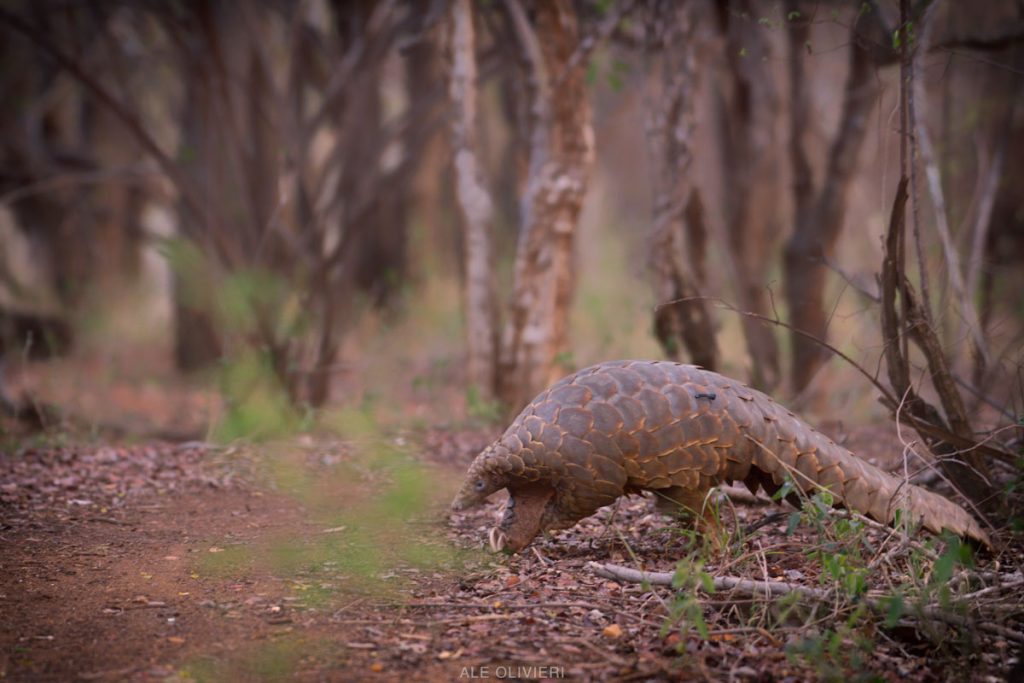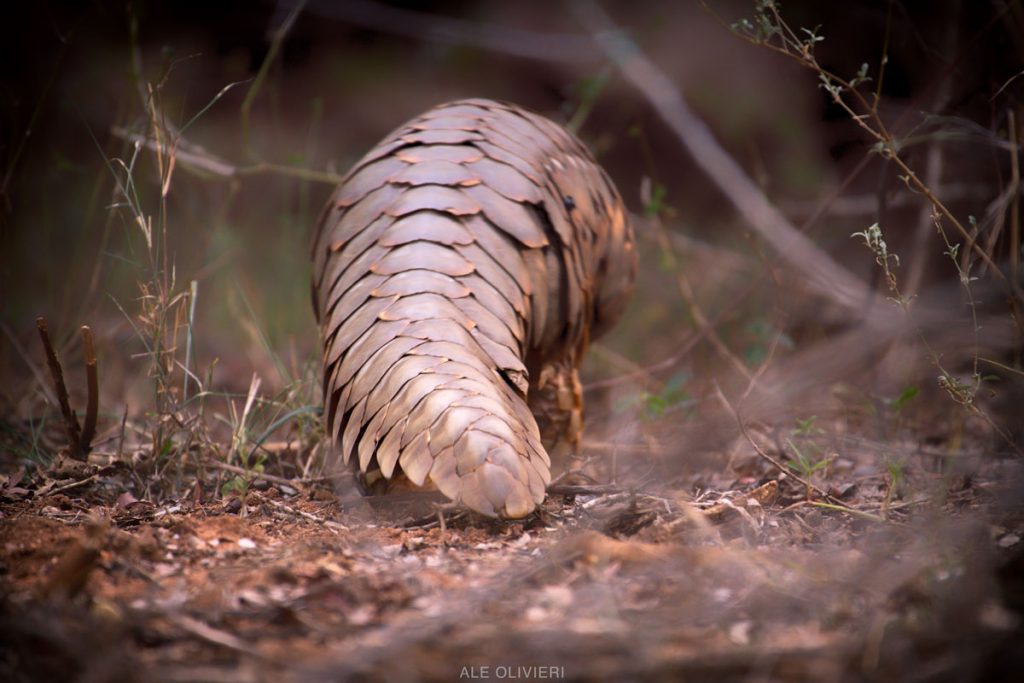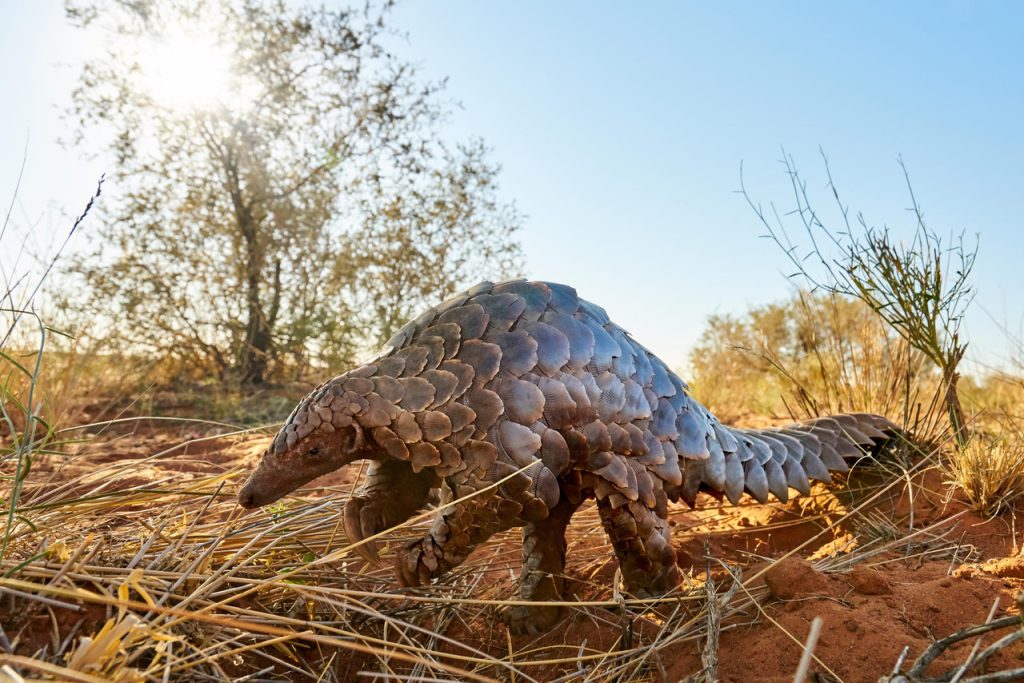Pangolins, often referred to as “scaly anteaters,” are unique and fascinating creatures that play a crucial role in the ecosystems they inhabit. Despite their ecological significance, pangolins face numerous threats, including habitat loss and illegal wildlife trade, making them one of the most endangered species on the planet. We thought we’d answer some commonly asked questions about pangolins to celebrate them.
What is a pangolin?
This may sound like silly question, but many people around the world and even people arriving on safari, have never even heard of a pangolin.
Pangolins belong to the order Pholidota, and there are eight recognized species classified into two genera: Manis and Phataginus. These species are further divided into four African and four Asian pangolin species. Pangolins are found across a wide range of habitats, from tropical forests to savannas, and their distribution spans across Asia and Sub-Saharan Africa.
Pangolins are characterized by their unique physical features. Their bodies are covered in overlapping, keratinous scales that act as armor, providing protection against predators. These scales make up about 20% of their body weight and are the primary reason why pangolins are often referred to as “scaly anteaters.” Despite their formidable appearance, pangolins are not aggressive; instead, they rely on their protective scales and the ability to roll into a tight ball when threatened.

Pangolins possess an elongated and slender body, with a long tail and powerful limbs. Their front limbs are equipped with sharp claws, which they use to dig into termite mounds and ant nests, their primary sources of food. The tongue of a pangolin can extend up to 40 centimeters, facilitating their ability to capture ants and termites with remarkable precision.
What is a pangolins general behavior?
Pangolins are nocturnal creatures, spending their days in burrows or hollow trees and emerging at night to forage for food. This is one of the reasons they are so difficult to see as they are most active outside of the normal safari times. If it is cold, they may come out earlier, sometimes even during daylight to feed before the cold winter night sets in. Sometimes they are out for very short periods and it’s very cold they may not emerge at all.
Their diet consists mainly of ants and termites, and they use their keen sense of smell to locate these insects. Pangolins are excellent diggers, using their powerful claws to break into termite mounds and ant nests.
During the mating season, pangolins may form monogamous pairs, and after a gestation period of about four to five months, a single offspring is born. Pangolin mothers are highly dedicated to their young, carrying them on their tails and providing protection until they are old enough to fend for themselves.
They are not territorial and rather have home ranges with individuals overlapping one another. A home ranges size is completely dependent on food availability and some are very small where other areas can be quite large, a good few kilometer’s squared.
How do pangolins move about?
People often think that pangolins walk on all fours, but this is not the case. When they get moving, they walk on two legs, their back legs. They stand up and use the tail and front half of their body to balance themselves. The front feet which are equipped with an amazing set of claws, are only used for digging up food. They don’t dig their own burrows and will take over old abandoned aardvark burrows. In areas where pangolins live in rocky terrain, they have been seen using their strong tails to push themselves up for a greater reach.

How do pangolins fit into the greater system?
Pangolins play a crucial role in maintaining the ecological balance of their habitats. As insectivores, they help control termite and ant populations, preventing these insects from becoming pests. By digging into termite mounds and ant nests, pangolins also contribute to soil aeration and nutrient cycling.
The presence of pangolins in an ecosystem can have cascading effects on various species. For example, the decline in pangolin populations could lead to an increase in termite and ant numbers, negatively impacting other fauna and flora in the area. Therefore, the conservation of pangolins is not only essential for their survival but also for the overall health and stability of ecosystems.
Why are pangolin so rare and endangered?
Despite their ecological importance, pangolins are facing severe threats that have led to their classification as the most trafficked mammals in the world. The primary threat is illegal wildlife trade, driven by the demand for pangolin scales and meat in traditional Asian medicine and as luxury items. Pangolin scales are falsely believed to have medicinal properties, leading to a lucrative black market that poses a significant risk to pangolin populations.
Habitat loss due to deforestation and agricultural expansion is another major threat to pangolins. As their natural habitats shrink, pangolins face increased competition for resources and a higher risk of human-wildlife conflict. Climate change is also emerging as a potential threat, affecting the availability of food sources and altering the ecosystems that pangolins rely on.
Where is the best place to see a pangolin?
This is not an easy question as even if one manages to be an area where there are pangolin, a lot of luck. A good way of increasing your luck is to go to an area where there is someone doing research on them. There is a young man doing just this at Tswalu, a reserve rich in its small nocturnal mammals. Being a private reserve, you can go out at any time of day or night and so can help increase your chances of seeing this elusive little animal.

How can we help?
There are many ways and conservation efforts set up to help pangolin, especially individuals that have been recovered from poaches and are still alive. A lot of work goes into rehabilitating these animals and eventually releasing them back into the wild which can take significant time and effort. Follow the link to read about how you can help us help more pangolins.
Conclusion
Pangolins are extraordinary creatures that play a vital role in maintaining the health and balance of ecosystems. Unfortunately, they are facing unprecedented threats, primarily due to illegal wildlife trade and habitat loss. The conservation of pangolins requires a coordinated effort at local, national, and international levels, involving governments, conservation organizations, and local communities.
By addressing the root causes of the pangolin crisis, implementing effective conservation measures, and raising public awareness, we can work towards ensuring the survival of these unique creatures. The protection of pangolins is not only essential for their well-being but also for the preservation of biodiversity and the overall health of our planet’s ecosystems. It is our responsibility to act as stewards of the natural world, safeguarding these remarkable animals for future generations.





